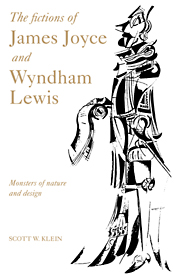Introduction: opposition and representation
Published online by Cambridge University Press: 22 October 2009
Summary
In the struggle today between the infinite number of modes that have been successively accumulated in the practice of modern painting, an older and more permanent struggle has been forgotten. I refer to the opposition between the methods of those painters who devoured Nature to feed a restless Monster of Design within them; and those who, on the other hand, offered their talents upon the altar of the Monster Nature; which talents, after absorption into the body of this mechanism, refused to be digested, and led a precarious and sometimes glorious existence in its depths.
Wyndham Lewis, “Prevalent Design”[S]urely to be double and to be 2 are not the same.
Aristotle, Metaphysics, 987aNature and design: As Wyndham Lewis argues in his 1919 essay “Prevalent Design,” the two are the poles of representational procedure. To surrender to the first is to cede control to pure content; to insist upon the other is to master nature's content within the pure figurations of form. Yet the two are not benign opposites. Within Lewis's rhetoric, nature and design are the subjects and objects of struggle, alternately predator and prey. The artist devours or is devoured, and is master or victim of a representational procedure that is figured as the division of monster against equivalent monster. Such is the vision of opposition, simultaneously Darwinian and Manichaean, that typifies Lewis's work in all of its rhetorical forms: painting, fiction, and artistic and ideological polemics. Throughout his extensive career Lewis divided and subdivided experience into patterns of opposition rooted in the painter's stance of mastery towards the perceived object.
- Type
- Chapter
- Information
- The Fictions of James Joyce and Wyndham LewisMonsters of Nature and Design, pp. 1 - 23Publisher: Cambridge University PressPrint publication year: 1994



